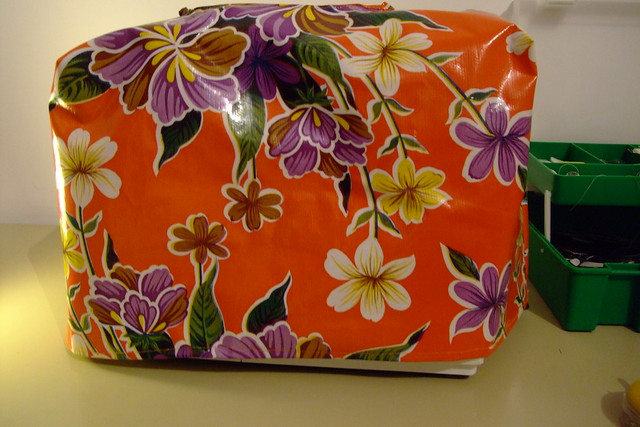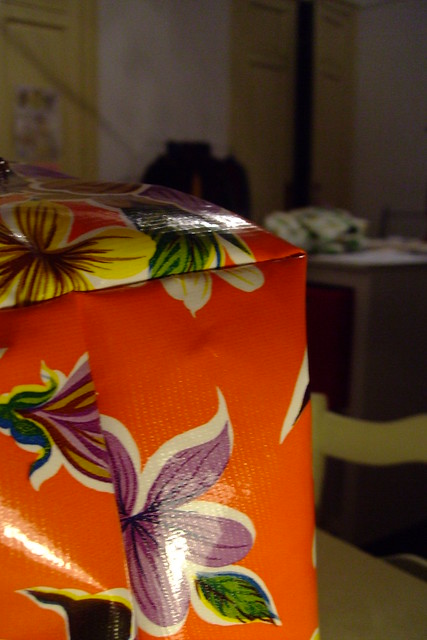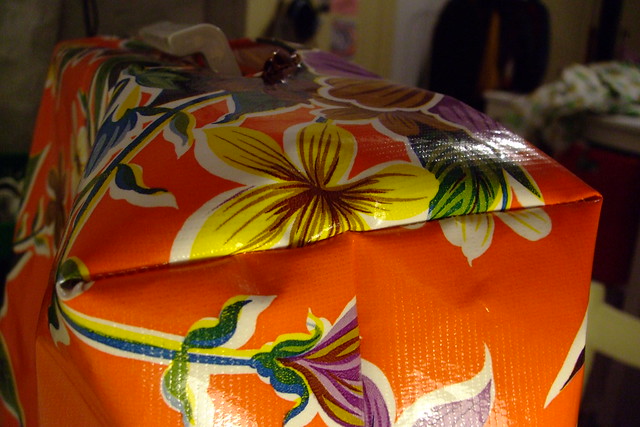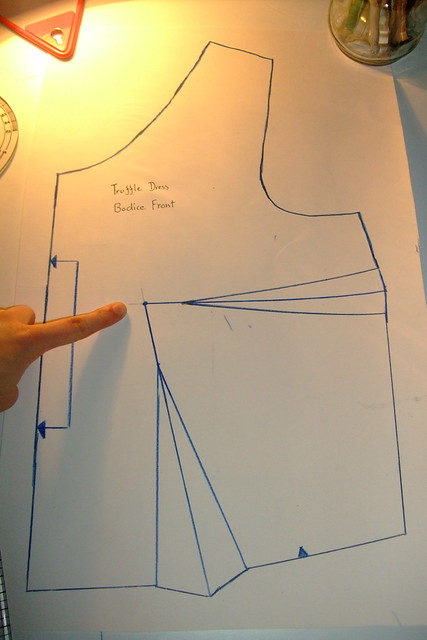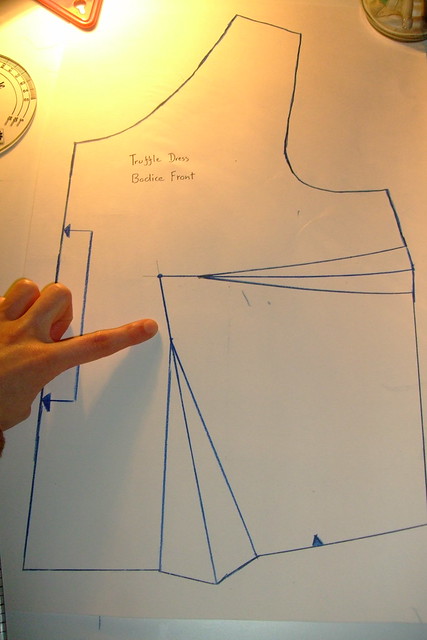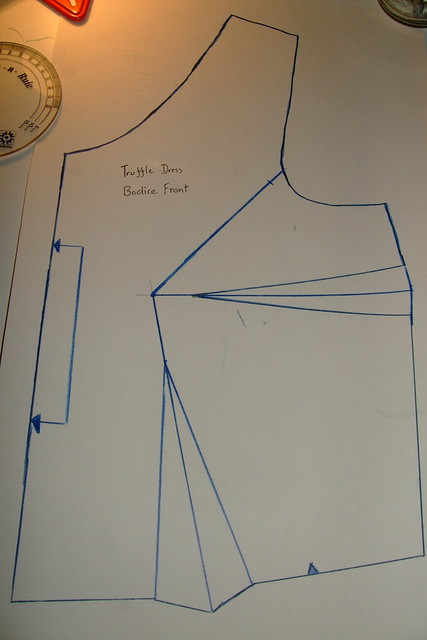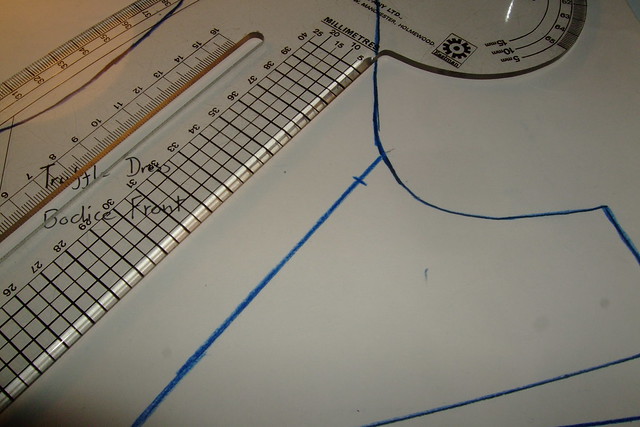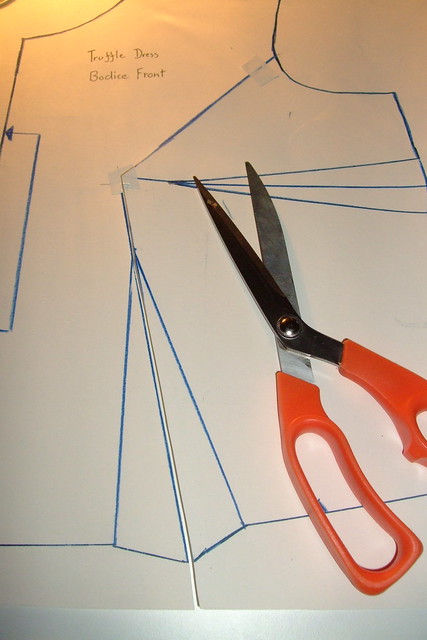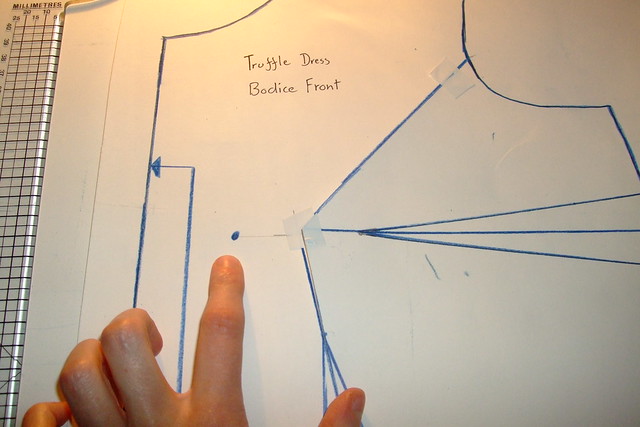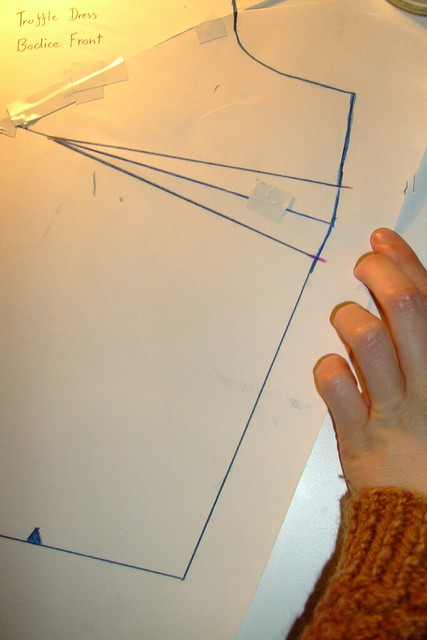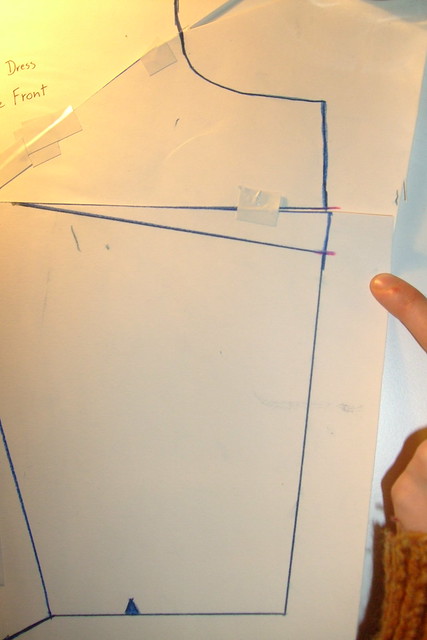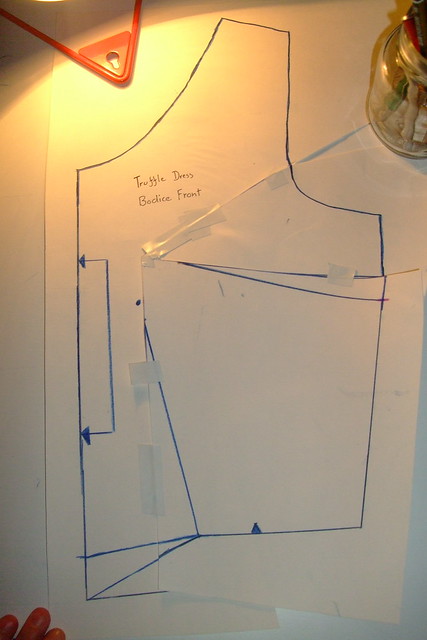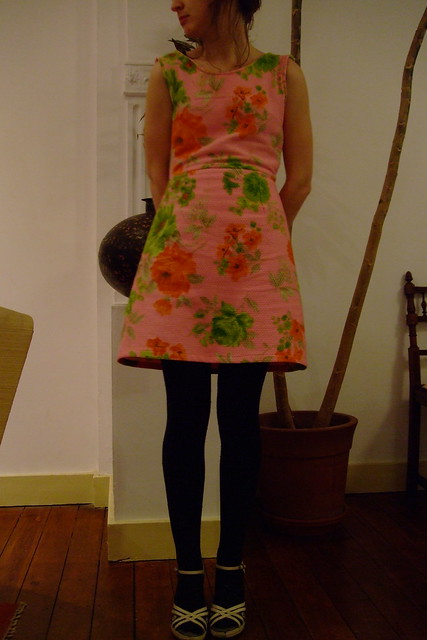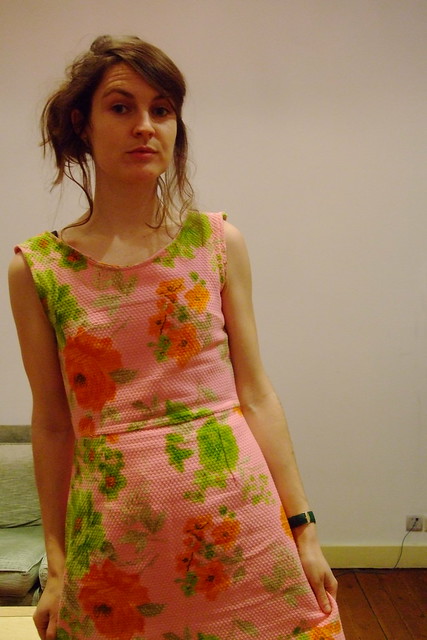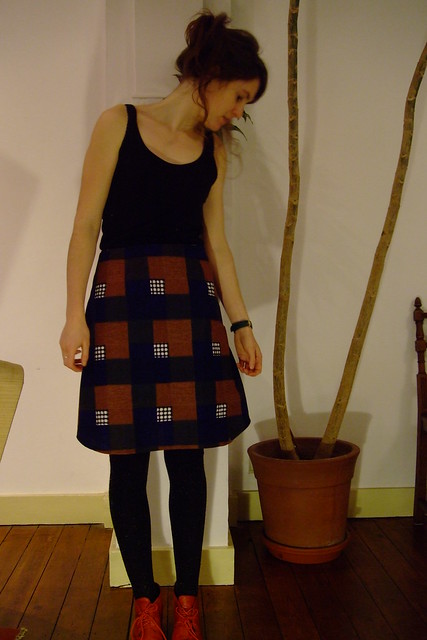
The white plastic sewing machine dust cover that came with my sewing machine, which is now (frighteningly) going on 7 years old, was long past its sell by date so I decided to fashion a new one out of some
'toile cirée' which I have a lot of from an old tablecloth! The best translation for '
toile cirée' in English is 'oil cloth' or 'vinyl cloth', but I'd probably just call it a 'plastic tablecloth'.
I simply drafted a quick pattern based on the shape of the old cover and then sewed it up.
Here it is cut out before I sewed it up. You could make one for your own machine by following this model making sure that the pattern corresponds to your machine measurements. I also drafted a facing for the handle area to finish the edges off.
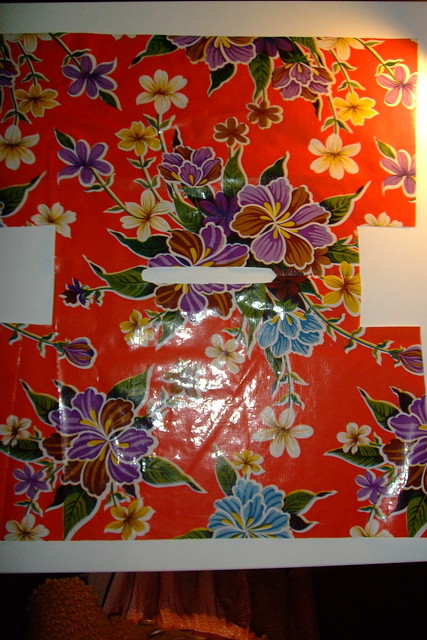
It was fun to use such a thick fabric and to make something that is not for wearing for a change!

